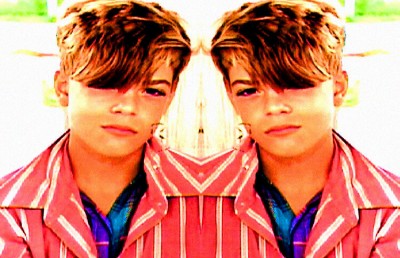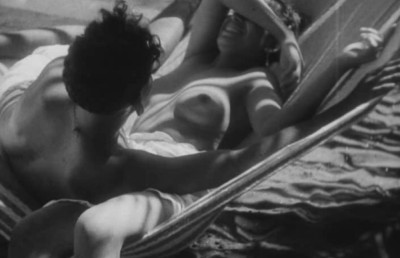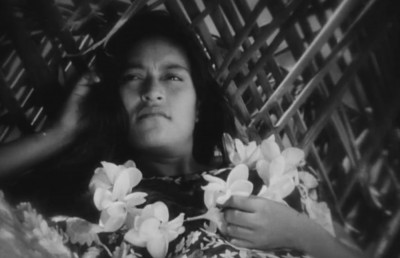Cinefest Turns 25
Cinefest
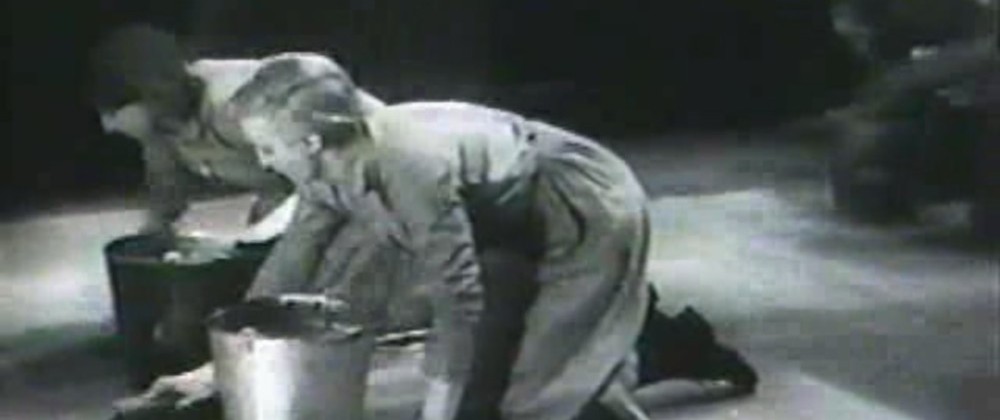
This year’s installment of the Syracuse Cinefest, which was held from March 3-6, 2005, marked its 25th anniversary. For the uninitiated Cinefest screens silent and early sound films daily from 9:00am to midnight Thursday to Sunday (usually the first weekend in March). The silent films are always accompanied by live piano, with the ‘house pianists’ being Phil Carli, Jon Marsalis, and Montreal’s own Gabriel Thibaudeau . Cinefest has come a long way from a small gathering of like-minded cinephiles and film buffs. Unfortunately as the festival has grown and aged it has lost many of its most cherished members (W.K. Everson, Herb Graff, Alex Gordon, Ted Lawson, Gordon Berkow, to name a few). It seems that each year the festival commemorates a new death in the Cinefest “family.” This year marks the second installment since the death of its founder Phil Serling. There is no doubt that the festival has struggled over these past two years, with attendance seemingly down, and perhaps a certain spark or energy missing, but with these crucial transitional years behind them I would venture that the future looks long and bright.
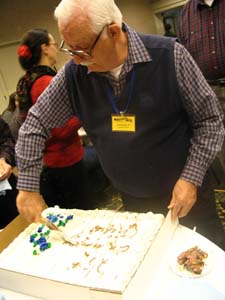
The festival got off to a snappy start with the musical comedy all-star revue Happy Days and odd western Lady of the Dugout before the first lunch break. Happy Days is a tale of two halves: the first half has some wonderfully funny dialogue, with Margaret White as the high pitched, spunky blonde who impersonates a bellboy so she can get into a Screen Actors social club with the hope of raising money to save her grandfather’s vaudeville act. The film had one of the best lines of the long weekend: “I’m not much of a man on a horse.” “You are not much of a man off a horse.” While the first half was full of wonderful little bits of vaudeville shtick, it turns into a dull thud in the second half after the benefit show starts and it becomes a series of canned theatre displays.
Lady of the Dugout (1918 Jennings-Shipman, dir W.S. Van Dyke) was easily one of the best, and most surprising films of the festival. The film stars and was produced by the real life outlaw Al Jennings. After serving some time and being pardoned by President Roosevelt the former outlaw Jennings turned over a new leaf “becoming an evangelist, politician, and writer, eventually forming his own motion picture production company….” (festival catalogue notes by Jenny Paxson). In this, his first film, Jennings plays himself as he recounts a story (fable?) from his past to a rich philanthropist who seems afraid of Jennings, not entirely unreasonable given his outlaw past. No doubt the Robin Hood nature of the story, with Jennings stealing from the rich to give to the poor, is a romanticized version of Jenning’s criminal life, but the film’s style is marked by a gritty realism that demonstrates Jennings as a novice producer could still deliver dramatic as well as moral and self-serving goods. The story concerns Jennings and his sidekick brother Frank Jennings coming across a family who were, literally, so poor they had to live in a hole in the ground (like the scene of the poor living in cave-like holes in Fellini’s The Nights of Cabiria, which was cut because of pressure from the Catholic church). The film is complex for its time with a flashback within the flashback structure, where we learn that the mother and children are not well served by a father who drinks what little money he has away rather than feeding his hungry family. This sets up a situation where Al Jennings and his brother Frank become “Robin Hood’s” of the West. In the flashback within a flashback we learn that the woman was cast out of her home by her religiously stern father for daring to court an irreligious man. This scene, which imparts an aura of criticism against the father’s rigid, religious paternalism, sets up the film’s conclusion. After a brief shoot-out (which was missing from the print) Jennings completes his good Samaritan act by returning the mother and children to her estranged parents to live a comfortable, safe life. Back in the present, the finale echoes his own life history, with Jennings released from prison and becoming a minister. What makes this film particularly fresh, is the way it downplays the western conventions –gun slinging, Indians, gallant horseback riding– in favor of a restraint tale of melodrama and redemption.
The Unbelievers (1918) directed by Alan (The Jazz Singer) Crosland is a fairly interesting World War 1 tale that deals with the conversion of a bigoted, upper class blue blood who loathes anyone below him, to the values and morals of his God fearing mother. The film equates Christianity as a byword for altruism, democracy, and peace. The most striking moment in the film, however, is reserved for Erich Von Stroheim as a the heartless German officer Lieutenant Kurt von Schnieditz who oversees the brutal assassination of civilians (including a grandmother and her granddaughter). I’m not surprised to learn from the festival catalogue notes that the scene was often excised by local censorship boards. It was nice to see Stroheim in the first (and perhaps most vicious) of many such roles he would play.
Daddies (1924, William Seiter) was a humorous domestic comedy centered around a group of die-hard bachelors whose oath to never marry and become fathers falls apart when one of them opens the door by adopting a war orphan. The men are all part of a bachelor’s club, where their oath is maintained by a promissory pledge to the club of $5,000 for anyone who breaks the oath. Things get complicated when one of the orphans ends up being a rather attractive looking, 18-year Mae Marsh, who falls in love with her “daddy” (Harry Meyers).
One of the better films of the festival this year was the aptly titled pre-Coder Thunder Below (1932, Richard Wallace), a searing, plantation potboiler pitting Tallulah Bankhead (as Susan), her husband Walt (Charles Bickford), and husband’s best friend and worker Ken (Paul Lukas) in a love triangle. The film begins with the multiple meaning epigraph, “thunder below are words used to describe earthquakes, but are also words to describe love.” Susan is having an affair with Ken. Just as they were on the verge of exposing their relationship, Walt succumbs to an eye malady and becomes blind. From this point on Walt plays his role with dark glasses, which hides his eyes and hence places the onus of performance on his voice and body gesture, which he uses extremely well. Ken is unwilling to cast more gloom into his Walt’s life and so can not bring himself to a revelation which would breach their trust and confidence. So they continue on as before, with Susan pretending to be the good wife, and Ken the supportive friend. The situation puts undue stress on Susan and Ken, especially when Ken seems more emotionally committed to maintaining Walt’s confidence and friendship than in consummating his love for her. Each proceeding scene between the three characters grows in sexual and emotional tension and concludes in surprising fashion. Sensing that Ken will never have the strength or courage to tell Walt about their love for each other, Susan takes matters into her own hands by jumping to a gruesome death onto a rocky beach. The way the suicide is edited is interesting. It begins with Susan’s point of view of the rocky beach down below. The scene cuts back to Susan, then to a second point of view shot of the camera zooming in to the rocky beach. The image goes out of focus and cuts to a wide shot of seagulls flying in the sky –an obvious symbol of Susan’s release from her sexual and emotional turmoil. The shot then cuts to the two men she died for, Walt and Ken, standing together, a subtle implication that they are now stuck with each other. Suicide in American films is rare indeed, as it goes contrary to the positive human agency which they commonly propagate. In Hollywood films nothing is ever so bad that can’t be solved by human force. Which makes moments such as this, which foreshadows a similar female suicide by Katherine Hepburn’s character, Lady Cynthia Darrington, in Christopher Strong (1933), all the more striking.
Another highlight was the Raoul Walsh political drama set in pre-WW1 Czarist Russia Yellow Ticket, starring the enchanting Elissa Landi as a Jewish schoolteacher Marya Kalish, determined to travel to the prison containing her sick father. In order to be able to travel freely during such a politically volatile period (World War 1, The Soviet Civil War) she gets a “yellow ticket,” which marks her as a prostitute. Once she arrives at the prison she finds her father dead, and dedicates herself to exposing the corruption of the Czarist regime. On hand helping her is British journalist Julian Rolphe, played by a young Lawrence Olivier. In an indirect way, Olivier’s character is reminiscent of the American journalist John Reed, author of Ten Days That Shook the World who reported on the Revolution from Russia, and died there in 1920. In his introductory scene on a train Rolphe refuses to share a compartment with a woman, which elicits the response from a Russian, “He’s an Englishman,” as if to imply that all Brits are homosexual! The film stars Lionel Barrymore as untrustworthy Baron Igor Andrey, who attempts to force himself sexually on Marya Kalish. In this, and other moments, director Walsh displays more visual expressiveness than he is usually noted for. The Baron’s advances are filmed from an extreme low angle, as he tries to kiss Marya pinned up against a tree. Also of interest is Boris Karloff in the bit role of a drunken horseman who bumps into the Baron. Marya, who plays one of the stronger heroines you’re likely find in an early 1930s film, shoots the corrupt Baron and then manages to escape on a plane with Rolphe during a (pre-Revolution?) moment of social anarchy.
One of the silent film highlights was The Enchanted Cottage (1924, John S. Robertson), which took the maudlin theme of “beauty is in the eye of the beholder” and made it something touching and heartfelt. Richard Barthelmess stars as Oliver Bashforth, a disfigured World War 1 veteran living with his well meaning but inconsiderate family. Partly to get away from his family, Bashforth flees to the titular cottage to live in isolation, where we get some mournful images of Bashforth sitting alone in a dark room. Bashforth eventually meets and falls in love with a plain Jane spinster named Laura Pennington (May McAvoy). As their relationship grows and they begin to see each other’s ‘true self’ they see each other from the “inside out” as handsome people. What is fascinating is how the transformation occurs without any fuss or attention paid to it. It just happens. Maybe the cottage, which has for centuries served as a honeymoon retreat, has supernatural powers? Or perhaps we are just seeing them as they see each other subjectively through their own eyes. This enables both actors to play double roles of sorts, their ‘true’ external shell with make-up and their ‘fantasy’ self out of make-up. For Barthelmess this means playing the disfigured veteran in Lon Chaney-styled make-up, and for McAvoy, with a bad overbite and facial putty. The only person who comes to visit them is an elderly neighbor named Major Hillgrove (Holmes Herbert), who is conveniently blind. Their fantasy bubble is punctured when Bashforth’s sister Ethel (Florence Short), her fiancée Rupert (Alfred Hickman) and his mother come to visit him. In a beautiful touch, Oliver and Laura start their walk down the staircase to greet their guests as their inner selves, but transform (through a dissolve) back to their true ‘ugly’ appearances by the time they reach the bottom of the stairs. The sister treats him as she always has: physically handicapped and somehow less human. The film ends with the couple deciding to live the rest of their lives in the cottage; choosing fantasy over reality. As the blind major says, “maybe they are living a life of illusion.” But it is the life they choose for themselves, and the one the film wants for them, as the final image has them reverting back to their handsome selves. The film was greatly enhanced by one of the best piano accompaniments of the festival, by Gabriel Thibaudeau.
The Depression era (roughly 1929-1933) was a period that saw many films that criticized the “idle rich” and tried to instill an ethos of work, compromise, and sacrifice. The theory being that if the lazy, undisciplined rich can work, then anyone can (My Man Godfrey is one of the best). Manslaughter (1930, George Abbott) falls into this sub-genre, with the idle rich portrayed by Claudette Colbert as a hedonistic blue blood named Lydia Thorne, who gets her comeuppance when she becomes involved with a labor conscious district attorney named Dan O’Bannon, played by Fredric March. The rich are so far removed from the average Joe that when her friends find out Thorne is interested in O’Bannon, a “lowly” DA, they say she is “slumming it.” Thorne will eventually learn her ways and fall in love with O’Bannon (they all do), but the turning point comes when her casual daredevil driving causes the death of a young officer on a motorcycle. In two previous scenes we see Thorne stopped for speeding, only to have her bribe the officer. Now her irresponsible behaviour casts her as an unsympathetic character who must not only win back O’Bannon’s respect, but the audience’s. Her moment of self-realisation comes in a wonderful scene where she goes to the hospital where the officer is battling for his life. The camera captures her in a static long take sitting in her fancy dress in a pensive state, while behind her on the hospital wall we see shadows of busy hospital activity (nurses, doctors, and hospital carts) passing by. The dramatic tension reaches a boiling point when O’Bannon is the prosecuting attorney who convicts Thorne, and then quits his position as DA after winning the conviction.
The film switches gear and becomes a prison drama, where Thorne finds out what life is like beyond her pampered ivory tower. This point is brought home when she encounters her former maid, Evans (Hilda Vaughn), whom she was partly responsible for putting in jail over a stolen piece of her jewelry. When Thorne sees Evans scrubbing the prison floor she calls out to her in the same tone and phrase as when she was her maid, “Why Evans.” The former maid looks over at her and replies, sarcastically, “Why Thorne.” Thorne learns the value of hard work and discipline in prison, but remains hell bent on vengeance against O’Bannon after she is pardoned. After making inroads toward regaining the audience’s sympathy in the prison scenes, her attitude toward O’Bannon raises doubts about her moral integrity once again. In the final scene Thorne realizes that she loves O’Bannon too much to cause him harm. This moment is revealed in another sensitive and underplayed long take, with Thorne bearing her soul to the camera in a final attempt to regain O’Bannon’s love (and our sympathy).
One of the more peculiar films this year (and that is saying something!) was the British King of the Damned (1935, Walter Forde). The film is basically a mutiny tale set in prison, with Conrad Veidt as a prisoner (Prisoner 83) who is placed in charge of the prisoners by the cruel commander Ramon Montez (Cecil Ramage). Veidt, who is far more educated than any of the other inmates, has idealistic dreams of establishing an egalitarian camp for workers. Veidt bides his time until leading a mutiny which momentarily upturns the prison hierarchy. What makes the film odd is that the pseudo leftwing subtext of the film, where the prison system stands in for the broader class system and the abuse of the worker, takes on (no doubt unintentionally) sinister overtones during an impassioned speech by the victorious Veidt which also has a megalomaniacal edge to it.
One thing you can always be certain of at Syracuse is a healthy dose of comedy, and this year was no exception with short films by Harold Lloyd (Hey There! 1918), Harry Langdon (The Big Flash 1932), Mack Sennett (Love, Honor and Behave 1920), and Weber and Fields (The Poolroom 1925).
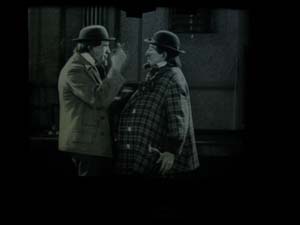
The Big Flash (Educational Pictures, dir. Arvid Gillstrom) demonstrates that Harry Langdon was able to hold his own in the sound era and make do with less than stellar material. In this film he is teamed up with Vernon Dent, who does Hardy, but Langdon does not exactly do Laurel. Even though the film is sound, and Harry had a pleasant enough voice that matched his physique, we laugh at his pantomime skills. All great comedians recycled gags, as Langdon does here by repeating the gag from Saturday Afternoon where he sweeps dirt, lifts up a rug and hides the dirt under the rug. An important part of Langdon’s human-baby persona was his ambivalence around women, never quite knowing what he should do around them. Langdon plays up the man-child who is overwhelmed by even the smallest hint of sexual contact, and does a wonderful ‘slow burn’ acknowledgement of a seductive kiss. After receiving the kiss his whole body falls limp in the woman’s arms, and slumps down onto the couch motionless. The seductive kiss concludes a gag from an earlier moment when he placed corn kernels in his pocket. After being kissed his body temperature rises so high that the corn begins to pop out of his pocket!
Part of the Syracuse tradition is going to the remarkable Landmark theatre for the Saturday morning 35mm screenings. Not only does it get you out of the Holiday Inn for a few hours, but it gets you into one of the few remaining theatres from the glory period of the Hollywood palaces. The Landmark Theatre (formerly the Loew’s State) was built in 1928 by renowned architect Thomas W. Lamb decorated in a style that Lamb described as “European, Byzantine, and Romanesque –which is the Orient as it came to us through the merchants of Venice.” [1] This year’s program at the Landmark Theatre included a few odd comic gems, When East Meets West (1928), featuring the hilarious singing, piano playing cowboy Ray Mayer; The Beau Brummels, starring the vaudevillian act of Shaw and Lee, At the Seashore (1929), with two wisecracking women sporting an aggressive brand of humor, and The Poolroom (1925), with the famous act of Weber and Fields. Unfortunately the sound was so bad for The Poolroom that you could not make out much of what was being said (not made any easier by their Dutch (or Hebrew?) sounding accents). Inaudible sound was also a problem for The Amateur Gentleman (1936, Thornton Freeland), a feature with wall-to-wall dialogue. I couldn’t bear it and left about halfway for a stroll in the sun, but the consensus from others who braved it until the end was a unanimous thumbs down for this early Douglas Fairbanks Jr. period boxing film. Rex Ingram’s Turn to the Right (1922) didn’t come with much of a pedigree, according to Liam O’Leary’s book Rex Ingram: Master of the Silent Cinema, but was a pleasant surprise with some nice on-location shooting, breezy pace, and clever plot.

Comedy can sometimes come from the most unexpected of places, as it did from Brooklyn I Love You, a Paramount ‘documentary short’ which depicts a Brooklyn where everyone’s waking moment is spent worrying, thinking, and deliberating over their lovable Dodgers.
The irrepressible Gracie Fields makes yet another appearance this year in Look up and Laugh (1935, Basil Dean). The plot pits Gracie as the leader of a group of old fashioned market stallholders who are being forced out by an impersonal group of developers who want to open up a chain store. The film’s best moments are the comic set pieces where Gracie is able to hold court. Two include a courtroom scene which is turned into a boxing ring by Gracie’s antics; and the Grand Opening night of the chain store which is sabotaged by Gracie when she kidnaps the appointed opera diva and takes to the stage in a grand parody of her.
Murder In Greenwich Village (1937, Albert S. Rogell) is a low budget Columbia programmer which demonstrates how a well-oiled Hollywood machine at its peak could produce top notch entertainment. Part screwball comedy and part mystery, the film is set in the unique world of bohemian artists, with Richard Arlen as Steve Jackson, leader of a motley group of struggling commercial artists. Fay Wray stars as a spoiled rich brat, Kay Cabot, who in her opening scene is seen fleeing a man’s apartment in a swimsuit. That man turns up dead, making Cabot a suspect. Jackson resides in the same apartment building and, against his better judgment, agrees to Cabot’s demand that he feign being her boyfriend so she has an alibi for the night of the murder. In true screwball style, before they eventually fall for each other Jackson and Cabot go through several rounds of verbal tit for tat. Joining the fun are a motley group of secondary characters, including the Senator (Raymond Walburn), who is always reminiscing about President McKinnley; and a slow-witted detective who always enters a scene with the introduction “I hope I am not protruding.” Somewhat out of step with the film’s comic tone is the character of the dead man’s brother Rusty Morgan, played with steely conviction by Marc Lawrence. Morgan is obsessed with avenging his brother’s death, and in the final scene tracks down the killer moments before the police. Knowing that the police are nearby, he shoots the killer with the full realization that he will be caught and arrested by the police. When asked why he killed knowing that he would go to prison, he replies, “I’ll sleep better nights.”
One of the more interesting films visually was I Love You Wednesday (1933, Henry King). Perhaps this is not too surprising when you realize that it was co-directed by William Cameron Menzies and photographed by Hal Mohr. The film blends some excellent on-location photography (especially footage at an oil field), with studio work which includes a bizarre night club act on a stage finished in Art Deco styling and an Egyptian motif, featuring men and women in scantily dressed science-fiction like costumes. The story recalls the love triangle in Thunder Below, this time with Elissa Landi (in her second film this year) as a woman, Vicki Meredith, caught between two men: her first love, Victor Jory (Randall Williams), who leaves her stranded on their honeymoon and disappears for years; and the ‘good’ man she subsequently marries, Philip Fletcher (Warner Baxter). The telling difference is that the two men here loath each other and become embroiled in a series of civil yet barbed verbal spats. Fletcher is an engineer at a oil field. His work place is introduced in a great shot which begins on a close-up of Vicki’s water reflection. The camera then tilts up to Vicki, and then further up to the top of a precipice to frame Philip.
Their romance is summed up in a poetic shot where they are seated at a café and in the background between them we see glimmering swans on a lake. Vicki’s life is complicated when Victor returns with the intention of winning her back, even though he is already married to one Cynthia Williams (Miriam Jordan). It helps that this was one of the best prints this year, but I Loved You Wednesday oozes style at every turn, as if to reflect the suave and confident actions of the principal characters. The film’s art direction is normally grand, except for one scene where it is downplayed to thematic effect, the scene where the two couples happen to meet at a speakeasy. The two women, Cynthia and Vicki, sit at the bar discussing their predicament. All that we see in the frame is a beer bottle in the foreground and dull, greyish walls in the background. This minimalist art design is different from other parts of the speakeasy, which feature the conventional glamour and pizzazz. Later in the same scene Vicki and Philip dance. The camera tracks with them while they dance and talk, and where we would normally expect an edit, the scene runs on for three to four minutes without an edit. The extended take gives extra meaning to this exchange and, to an extent, foreshadows her decision to remain with the honest and hard working Philip.
After watching another film which pits a woman in-between two men, Their Mad Moment (1921, Hamilton MacFadden, Chandler Sprague), I think it is time to coin a new genre, or sub-genre of the romance/drama: the “yo-yo” genre: films where a woman must choose between two potential suitors/lovers/husbands. The choice that the woman has is usually between one of the following type of men:
a) a rich, older man
b) a rich young man who is a lout
c) a young honest man who works for a living
d) a young honest man who works for a living, but ends up being filthy rich
(and the variable)
e) an ethnically vague type the —‘foreigner’
The one discouraging recent trend which has continued this year is the dearth of non-American films. This year the only non-American films were from Britain, but I can remember a time (at least since when I have been going, 1991) when each year would offer at least a handful of films from either France, Germany, Russia, or Italy. I would certainly not want to suggest any conspiracy theories over why this is happening, and indeed it may just be a question of what is available, but I wouldn’t be surprised if it has something to do with certain people no longer being involved with Cinefest, for reasons of death or otherwise (W.K. Everson, Paolo Cherchi Usai, and Chris Horak to name a few). I hope next year proves me wrong. One thing is certain, I’ll be there to find out.
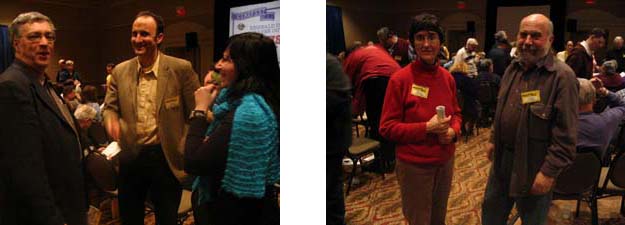
Endnotes
1 Renewing Syracuse. March/April 2004.




